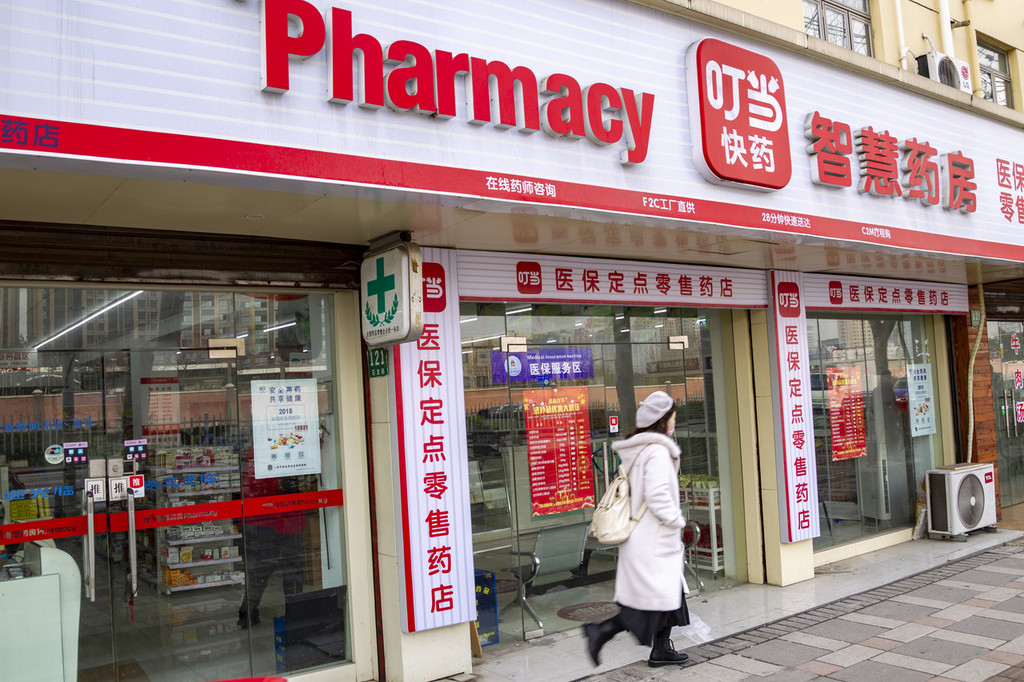In early September 2022, China-based digital medical services provider Dingdang Health was listed on the Hong Kong Stock Exchange. The company opened at an issue price of HKD 12 (USD 1.53) per share with a slight increase of 2%, and its market value reached HKD 16.3 billion (USD 2 billion).
The company—which also goes by Dingdang Kuaiyao and Dingdang Medicine Express (Beijing) Technology Co. Ltd.—provides comprehensive medicine delivery and healthcare services via the Dingdang Medicine Express app.
Since the pharmaceutical O2O industry is still fairly new and volatile, Dingdang Health hasn’t had an easy journey over the past eight years. With competitors like Meituan and Ele.me entering the fray and capitalizing on their current online traffic and delivery resources, competition is heating up.
However, the recent successful listing marks a new chapter for Dingdang Health, and for the pharmaceutical O2O industry in general.
A difficult start in the industry
It can be argued that the pharmaceutical O2O industry was a natural progression in the order of things, the next step after catering and food delivery services. If one can order groceries and a hot meal to be delivered to one’s door within minutes, why not medicine?
It helped that the pharmaceutical retail market is an extremely lucrative one, worth trillions of dollars. Seeing the opportunity, several O2O platforms set up shop between 2013 and 2014, some of which were supported by well-known investment institutions. Dingdang Health was among a handful of companies established during this period. These platforms aimed to bridge the gap between pharmacies and users by making it easy to order medicine online.
However, the bubble soon burst. Many of these companies failed after just two or three years—according to VBData, by 2016 more than half of the platforms established in 2013 had ceased operations.
Reasons for failure
Their failure can be attributed to a number of factors.
First, the demographic of smartphone users (and therefore those who would use such services) skews towards the younger generation. Among the population, younger people often need medicine the least, and demand hasn’t evolved enough to the point where they would purchase medicine for their elderly parents yet.
Second, speed is an important factor when it comes to medicine—arguably more so than in food and grocery delivery. This calls for a mature logistics system that requires heavy investment.
Third, there are restrictions in place that have yet to evolve. For instance, while online platforms often want to offer 24-hour delivery, pharmacies have fixed business hours.
The capabilities of the founding team and the business’s capital investment can also affect a project’s success.
Dingdang Health’s advantage
Dingdang Health is one of the few that managed to find solutions to the above problems. Founder Yang Wenlong raised over RMB 3 billion (USD 414 million) in five rounds of financing and built a strong founding team.
It also helped that Yang is the chairman of Renhe Pharmacy Company, a position that enabled Dingdang Health to do what its competitors could not: build its own pharmacies to ensure 24-hour operation, establish a standardized delivery team, capitalize on current brand recognition, and continue to tweak operations to ensure speed of delivery and adequate supply.
In the last few years, the numbers of Dingdang Health’s smart pharmacies and drug orders have increased rapidly, driving overall revenue growth. The company’s total revenue increased from RMB 580 million (USD 80 million) in 2018 to RMB 3.68 billion (USD 509 million) in 2021.
Since the setup costs of its physical pharmacies and online delivery system are high, this rapid revenue growth has not resulted in profits. However, the loss ratio is gradually being reduced, with the adjusted net loss ratio dropping from 11.9% in 2018 to 8.9% in 2021 and 4.5% in Q1 2022.
This self-supporting model, where Dingdang Health operates with its own supply, has enabled it to differentiate itself from traditional O2O companies.
At the same time, others are now eyeing the market. New competitors now include Meituan, Ele.me, JD Health, and Chinese pharmacy chains such as LBX Pharmacy, Dashenlin Pharmacy, and Yifeng Pharmacy.
These established companies already have enough capital and resources, as well as advantages in current traffic and production volume, to compete.
Stay tuned for the second installment of this two-part series, where we look at the unique challenges of the pharmaceutical O2O industry.
This article was adapted based on a feature originally written by Zhang Xiaoxu and published on Artertial Network (WeChat ID: vcbeat). KrASIA is authorized to translate, adapt, and publish its contents.

